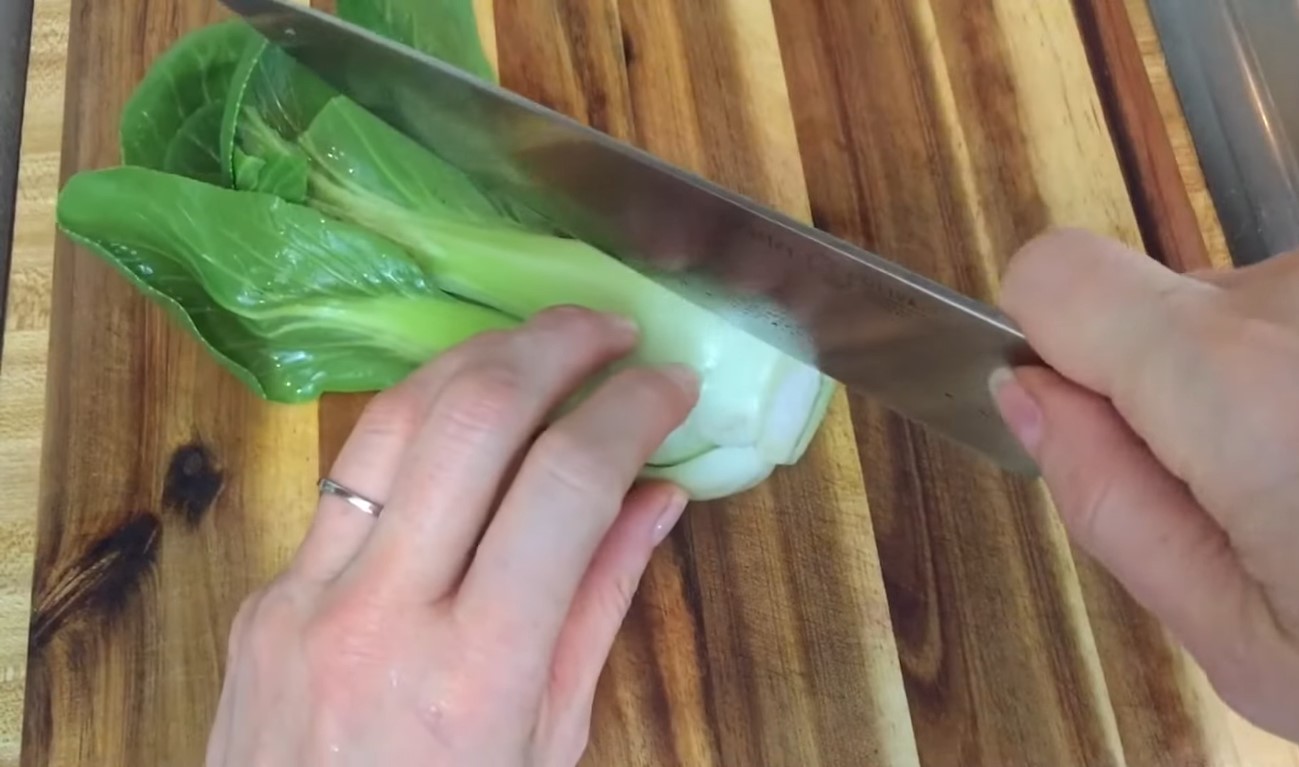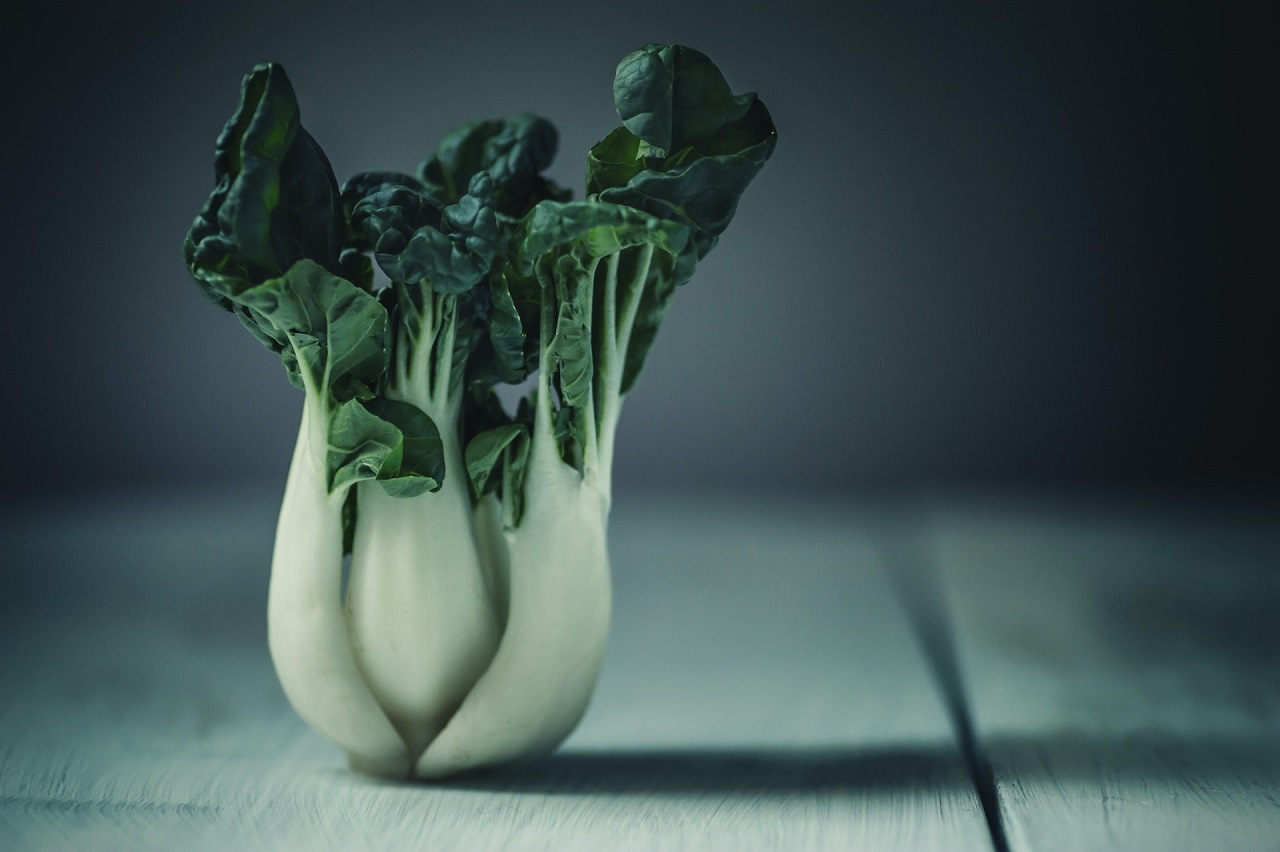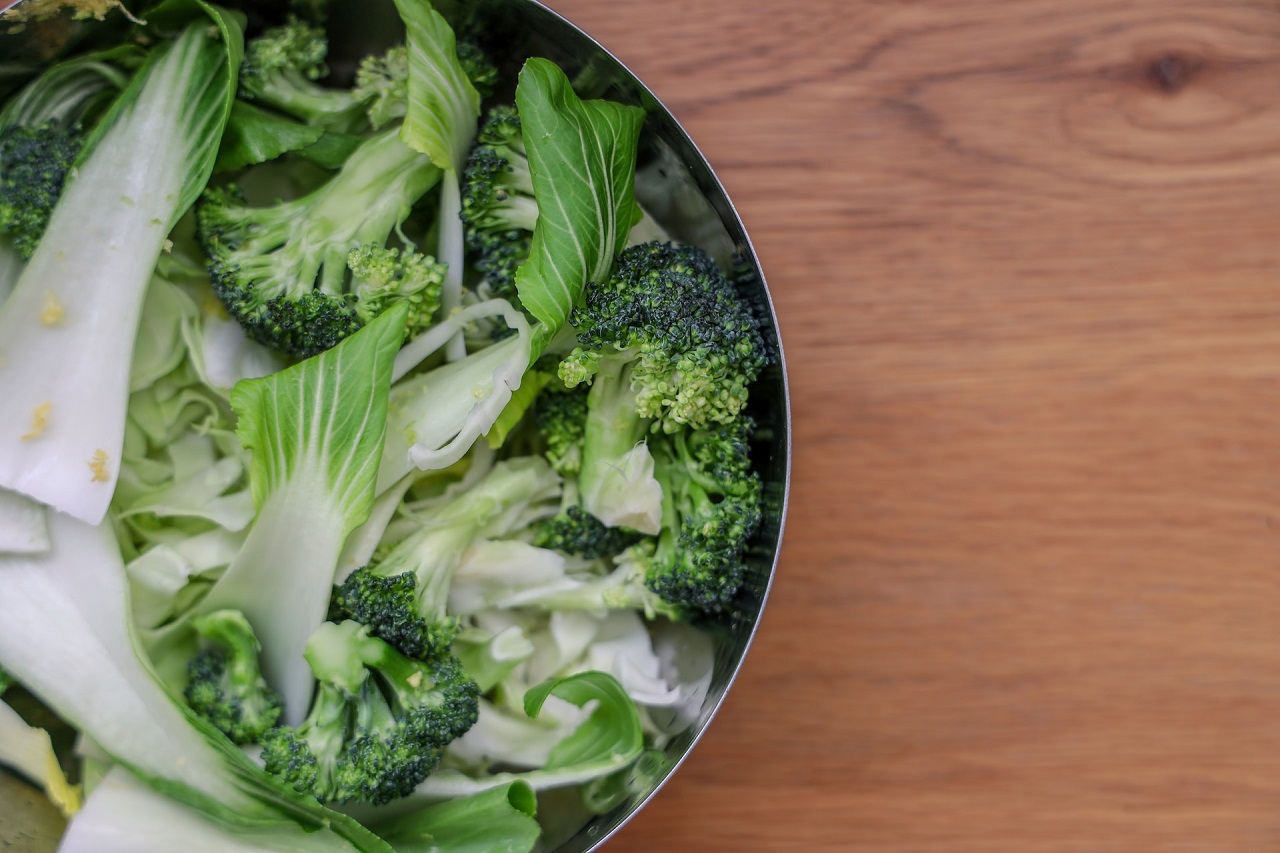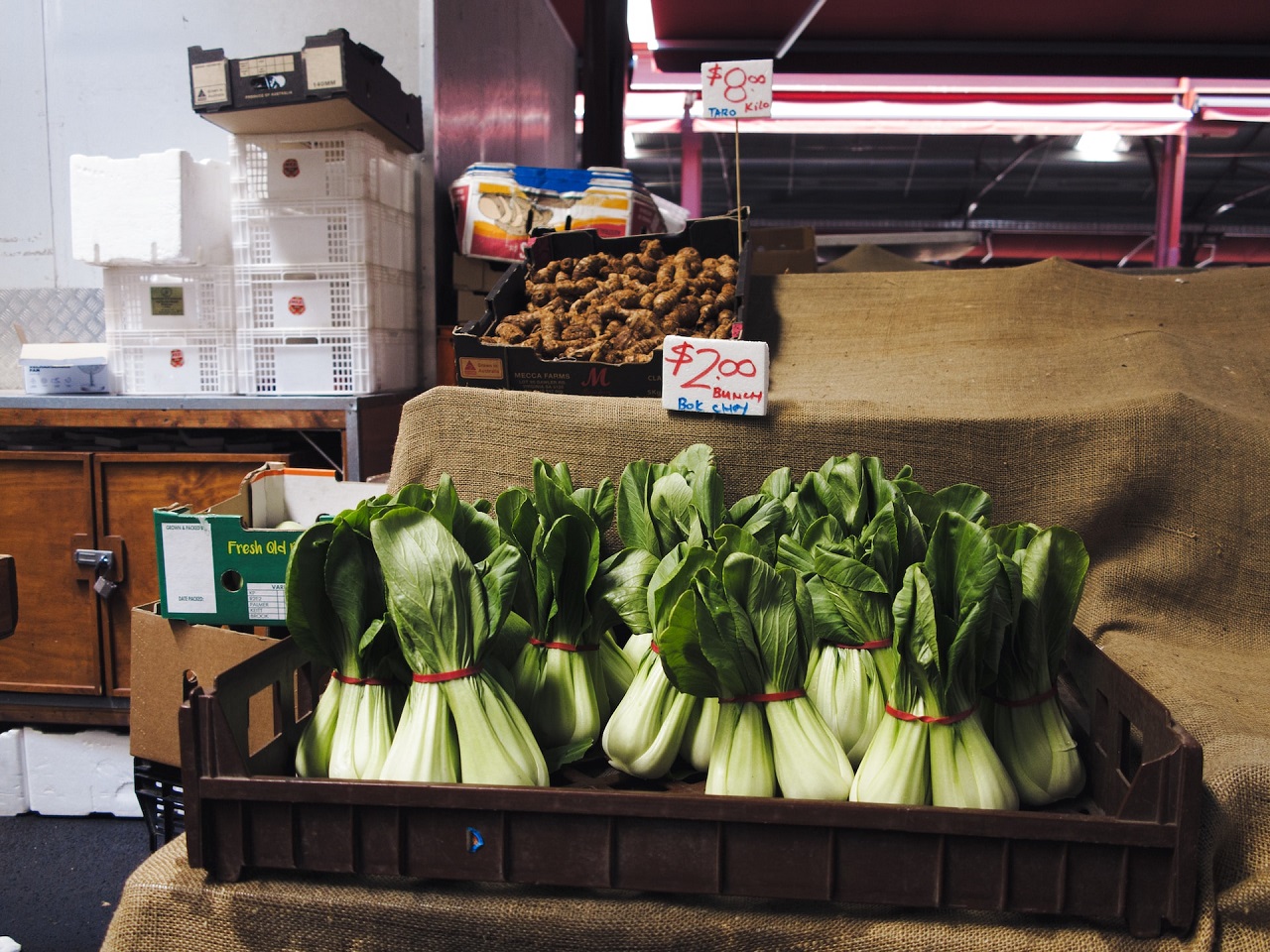Chop, Slice, Dice - How To Cut Bok Choy For Your Recipes
Are you ready to enhance your meals with bok choy? Then know how to cut bok choy. Master the basics of preparing it with our easy-to-follow instructions.
Author:Xander OddityReviewer:Dr. Felix ChaosphereOct 25, 202318K Shares327.8K Views

Knowing how to cut bok choywill make you enjoy this vegetable that’s like a crunchy, leafy hug for your taste buds.
If you’ve ever wandered through the aisles of an Asian grocery store or found this vibrant green delight in your local market, you’re in for a treat!
Bok choy isn’t only a flavorful addition to your culinary repertoire. It's also packed with a whole bunch of nutrients that will make your taste buds sing.
Now, before you dive headfirst into your bok choy adventure, don’t you want to know how to handle this green goodness? After all, it’s got a reputation for being a tad tricky to chop.
Don’t worry, though. We’re here to share how to cut bok choy the right way!
What Is Bok Choy?
Bok choy (also spelled as bak choi) is a popular leafy green vegetable that belongs to the Brassica family of cruciferous vegetables.
Cruciferous vegetables are known for their four-petal flowers, which form a cross-like shape; hence, the name “cruciferous.”
Common cruciferous vegetables include:
| arugula | collard greens |
| broccoli | kale |
| brussels sprouts | mustard greens |
| cauliflower | radishes |
| cabbage | turnips |
Bok choy is characterized by its unique appearance and is often used in a variety of culinary dishes, particularly in Asian cuisine.
Per FoodLiteracyCenter.org, in Cantonese (a Chinese language), bok (pakor bai) means whiteand choy(choior cai) means vegetable.
Its other names include:
- Chinese cabbage or white Chinese cabbage
- pak choyor pak choi
- (in the Philippines) pechay Tagalog
- spoon cabbage
Before we learn how to cut bok choy, here are some important aspects to consider about this vegetable:
a. Cultivation
Bok choy is easy to cultivate and grows well in various climates.
It‘s a cool-season vegetable that can be planted in both spring and fall. It prefers well-drained soil and can tolerate light frost.
Here are two tips from The Spruce:
- When planting bok choy seedlings, allot 6 to 12 inches of space between them.
- When planting rows of bok choy, allot 18 inches to 30 inches of space between rows.
How about tips on how to cut bok choy? We’ll go to that in a while.
b. Harvesting
Bok choy can be harvested at different stages of growth.
Baby bok choy is typically harvested when the plants are small and tender. Mature bok choy is ready for harvest when the leaves are larger and the plant has reached its full size.
c. Cooking Methods
It’s commonly added in:
- soups
- spring rolls
- meat dishes
- seafood dishes
The leaves and stems can be cooked together or separately, depending on the recipe and desired texture.
d. Companion Planting
Bok choy is often used in companion planting - the practice that involves planting different types of plants near one another to achieve various benefits.
It can be grown alongside other vegetables (e.g., tomatoes, herbs, and beans) to help deter pests and improve overall garden health.
e. Common Pests
Bok choy can be susceptible to certain pests and diseases, including:
- aphids (an insect with small, pear-shaped bodies; long, slender legs; and two antennae)
- cabbage worms
- downy mildew (a plant disease caused by water molds; symptom: yellow or pale green spots on the upper surface of leaves)
Gardeners often employ various pest control methods to protect their bok choy crops.
f. Culinary Diversity
It has also gained popularity in Western cooking, where it is used in a variety of dishes, from side salads to grilled and roasted preparations.
Several Asians and other nationalities know how to cut bok choy because its part of their regular meals.
g. Storage
To maintain its freshness, bok choy should be stored in a plastic bag in the refrigerator. It can typically be kept for a few days, but it’s best used as fresh as possible.
h. Cultural Significance
Bok choy is an essential ingredient in Chinese New Year dishes, symbolizing wealth and good fortune.
Bok Choy Appearance
Bok choy has a distinct appearance that sets it apart from many other leafy greens.
Over 20 varieties of bok choy are grown in:
- China
- Hong Kong
- Taiwan
One variety is the Shanghai bok choy, which has more elongated, slender stalks.
Though it depends on the variety, its general physical characteristics include:
a. Leafy Greens
Bok choy has dark green, leafy greens that form a cluster of thick, crisp leaves. The leaves grow from a central stalk.
b. Stalk
The central stalk of bok choy is:
- thick
- crisp
- pale green or white
The stalk is usually broader at the base and tapers as it reaches the leafy greens.
c. Size
Bok choy can vary in size but usually ranges from 6 to 8 inches in length, with the leafy greens at the top forming a rosette. Learn how to cut bok choy to know how to slice the stalks the right way.
d. Texture
The leaves of bok choy are smooth and tender, while the stalks are crunchy and slightly juicy.
e. Shape
Bok choy leaves are typically oblong or oval, with a slightly serrated or scalloped edge.
f. Color
The dark green leaves of bok choy contrast with the paler green or white stalks. Some varieties have a more pronounced color difference between the leaves and stalks.
Bok Choy Taste
What does bok choy taste like?
In her February 2023 article about this vegetable for Allrecipes.com, Corey Williams wrote:
“„Bok choy tastes similar to cabbage. It has a mild, fresh, and grassy flavor with a slight peppery kick. The stalks have a celery-like crunch, while the leaves are soft and crisp.- Corey Williams
It’s also prized for its mild, slightly peppery flavor and its crunchy texture, which makes it a popular choice for:
- soups
- salads
- stir-fried foods
As for its two main varieties: baby bok choy is more tender, with a milder flavor, while mature bok choy has a stronger taste.
Bok Choy Benefits
Aside from being liked for their unique combination of flavors, cruciferous vegetables are also often praised for their health benefits.
They are rich in vitamins, minerals, and phytochemicals, including glucosinolates, which can have anti-cancer properties.
That said, bok choy (it has glucosinolates) is a nutrient-rich vegetable. It offers several nutritional benefits:
a. low in calories
b. high in vitamins (vitamin A, vitamin C, vitamin B9, vitamin K)
- Vitamin A promotes healthy vision, skin, and immune function.
- Vitamin B9 or folate is crucial for cell division.
- Vitamin C boosts the immune system and promotes skin health.
- Vitamin K is important for blood clotting and bone health.
c. good source of minerals (calcium, magnesium, potassium, iron)
- Calcium and magnesium are important for bone health.
- Potassium helps regulate blood pressure.
- Iron is necessary for transporting oxygen in the blood.
d. good source of dietary fiber
- beneficial for digestive health
- can help maintain healthy cholesterol levels
e. contains antioxidants, which:
- help protect cells from damage caused by free radicals
- may contribute to a reduced risk of chronic diseases, including certain types of cancer
f. low in fat
g. helps in hydration (has a high-water content)
Therefore, adding bok choy in your diet can be a nutritious way to incorporate a range of vitamins and minerals while adding variety to your meals.
How To Cut Up Bok Choy
Cutting bok choy is a simple process. There are several ways to do it depending on your recipe and preference.
Here’s a step-by-step guide on how to cut bok choy in different ways:
1. Separate the stalks:
a. Start by washing the bok choy thoroughly under running water to remove any dirt or debris.
b. Separate the individual stalks from the bunch.
You can cut the entire bunch from the root end or just take the number of stalks you need for your recipe.
2. Trim the base:
a. Lay the bok choy flat on a cutting board.
b. Use a sharp knife to trim about 1/4 to 1/2 inch from the base of the stalks. This removes any dried or discolored ends.
3. Halve or quarter
To prepare bok choy for stir-frying or sautéing, you can halve or quarter it:
a. If you want to halve it, simply slice the bok choy lengthwise down the center, creating two equal halves.
b. If you prefer smaller pieces, you can further cut the halves into quarters. This will result in four pieces from each stalk.
4. Chopping for soups or salads
For recipes like soups or salads, you may prefer a more finely chopped bok choy. Here’s how to cut bok choy for this one:
a. After trimming the base, chop the bok choy into smaller pieces. Start by slicing the stalks crosswise into thin strips.
b. If you want even smaller pieces, turn the strips and make additional cuts to dice the bok choy finely.
5. Separating the leaves
For dishes where you only want to use the tender leaves, you can separate them from the stalks:
a. After trimming the base, gently pull the leaves away from the stalks. They should come apart easily.
b. You can then chop or use the leaves whole in your recipe.
6. Rinsing again (optional):
After cutting, you can give the bok choy pieces a final rinse to ensure there is no residual dirt.
7. Pat dry (optional):
If you’ve washed the bok choy again, pat it dry with a clean kitchen towel or paper towels before using it in your recipe.
Though this step is optional, if the dish you’re preparing has sauce, then you may want to consider this one. As Corey Williams reminds in her article:
“„Thoroughly drying the bok choy before cooking ensures that you don't end up with a watery sauce.- Corey Williams
Now that you’ve learned how to cut bok choy using different methods, you can use this versatile vegetable in a variety of dishes.
Adjust the cutting style based on the texture and appearance you desire for your specific recipe.
How To Cut Bok Choy Into Strips
Don’t worry because it’s a simple process. Follow these step-by-step instructions on how to cut bok choy into strips:
1. Wash the bok choy.
Use your hands to gently rub the leaves and stalks under running water.
2. Again, trim the bottom.
Place the bok choy on a cutting board. Use a knife to trim off the bottom of the bok choy where the stalks meet to remove any dried or damaged ends.
3. Separate the leaves.
Gently pull apart the bok choy leaves from the stalks.
You’ll have two main parts: the green leafy tops and the white stalks. You can use both parts in your recipe.
4. Slice the stalks.
Lay the white stalks flat on the cutting board. Hold them together and cut them into thin strips lengthwise.
You can choose the width of the strips based on your preference, but they are often cut to around 1/2 to 1 inch in width.
5. Slice the leaves.
Stack the green leafy tops on top of each other. Roll them up into a cylinder shape, and then slice across the roll to create thin strips.
This will result in ribbons of bok choy leaves.
Remember to use a sharp knife for this process, as it will make it easier and safer. Also, be careful while handling the knife.
Too Much Bok Choy Put A Woman Into A ‘Coma’
Here’s a word of caution, albeit with a chuckle:
While bok choy is incredibly healthy and delicious, devouring lots of it can lead to an unexpected side effect - flatulence (farting)!
Yup, that’s right. Overindulgence in bok choy can sometimes leave you in quite the windy predicament.
According to Advanced Endoscopy, cruciferous vegetables like bok choy are known to cause gas. They can also make you feel bloated (your abdomen feels full or tight).
Unfortunately, for one woman, the consequence was worse.
In the summer of 2010, according to HuffPost, the emergency department of one of the hospitals within the NYU Langone Health system, the medical center of New York University (NYU), admitted an 88-year-old Chinese woman.
Her family said that for three days, she was lethargic (feeling sluggish, fatigued, and lacking in energy).
Lethargy is a state of physical and mental weakness, often characterized by a general feeling of tiredness or exhaustion.
In May 2010, New EnglandJournal of Medicine (NEJM) by the Massachusetts Medical Society published a report about the said incident.
Based on the report, for months, the patient ate approximately 1 to 1.5 kilos of uncooked bok choy every day. She thought that doing so would be beneficial for her diabetes.
At the time of her confinement, the patient also had:
- dry skin
- coarse hair
- macroglossia (enlarged tongue)
- periorbital edema (swelling of the area - the tissue - around the eyes)
- pitting edema (her lower legs were swollen because of fluid buildup)
She was intubated (a machine helps her breathe) because of respiratory failure and was diagnosed to suffer from “severe hypothyroidism with myxedema coma.”
Raw bok choy contains an enzyme called myrosinase (cooking bok choy inactivates it), which causes the patient’s thyroid not to function well.
Hypothyroidism is a medical condition in which the thyroid gland doesn’t produce enough thyroid hormones to meet the body’s needs.
One of its complications is myxedema coma, which is so serious it can lead to one’s death, according to the National Center for Biotechnology Information (NCBI).
NCBI notes that myxedema coma doesn’t necessarily refer to coma, where an individual is in a profound and prolonged state of unconsciousness.
What myxedema coma does to a person is to make his/her mental activity deteriorate.
So, remember, it’s all about balance when it comes to eating this lovely leafy green. But don’t let that scare you off. Just enjoy bok choy in moderation and you’ll be good to go!
How To Cut Bok Choy - People Also Ask
Is It OK To Eat Bok Choy Every Day?
Citing a research paper published by the journal Food Chemistry in May 2022, a July 2022 article by EatingWell stated that it’s safe to eat 100 grams of cooked bok choy daily.
For reference, 100 grams of cooked bok choy contains:
| Calories | 12 |
| Protein | 1.6 grams |
| Fat | 0.2 gram |
| Carbohydrates | 1.8 grams |
| Fiber | 1 gram |
| Calcium | 93 milligrams (mg) |
| Potassium | 371 mg. |
| Iron | 1 mg. |
| Vitamin C | 26 mg. |
Is Bok Choy Healthier Raw Or Cooked?
In his article for Dr.Axe.com, Jillian Levy, a Certified Holistic Health Counselor (CHHC), comparing 100 grams of raw bok and 100 grams of cooked bok choy, the former contains more:
- calcium
- carbohydrates
- vitamin A
- vitamin B9 (folate)
- vitamin C
- vitamin K
Levy advises people with thyroid problems to consult their doctor first before eating bok choy (whether raw or cooked).
Is Bok Choy Good For Diabetics?
To people who have diabetes, the American Diabetes Association highly recommends a daily serving - 3 to 5 servings - of non-starchy vegetables, such as bok choy.
One serving of vegetables is equivalent to:
- 1 cup of uncooked vegetables
- 1/2 cup of cooked vegetables
Non-starchy vegetables are low in carbohydrates and sugars.
Moreover, when compared to starchy vegetables (e.g. beetroot, peas, potatoes), they are lower in calories and have a lower glycemic index.
The glycemic index (GI) is a numerical scale that ranks carbohydrates in foods based on how they affect blood sugar levels after consumption.
Since starchy vegetables contain huge amounts of carbohydrates, they can raise blood sugar levels more significantly.
Final Thoughts
Knowing how to cut bok choy will help you prepare dishes where they are included.
It’s all about separating the crisp, white stalks from the tender, leafy greens. A bit like vegetable surgery, but with tastier results!
This vegetable’s adaptability in different dishes and cooking styles makes it a valuable addition to various dishes worldwide.
So, it will come handy if you know how to cut bok choy correctly.

Xander Oddity
Author
Xander Oddity, an eccentric and intrepid news reporter, is a master of unearthing the strange and bizarre. With an insatiable curiosity for the unconventional, Xander ventures into the depths of the unknown, fearlessly pursuing stories that defy conventional explanation. Armed with a vast reservoir of knowledge and experience in the realm of conspiracies, Xander is a seasoned investigator of the extraordinary.
Throughout his illustrious career, Xander has built a reputation for delving into the shadows of secrecy and unraveling the enigmatic. With an unyielding determination and an unwavering belief in the power of the bizarre, Xander strives to shed light on the unexplained and challenge the boundaries of conventional wisdom. In his pursuit of the truth, Xander continues to inspire others to question the world around them and embrace the unexpected.

Dr. Felix Chaosphere
Reviewer
Dr. Felix Chaosphere, a renowned and eccentric psychiatrist, is a master of unraveling the complexities of the human mind. With his wild and untamed hair, he embodies the essence of a brilliant but unconventional thinker. As a sexologist, he fearlessly delves into the depths of human desire and intimacy, unearthing hidden truths and challenging societal norms.
Beyond his professional expertise, Dr. Chaosphere is also a celebrated author, renowned for his provocative and thought-provoking literary works. His written words mirror the enigmatic nature of his persona, inviting readers to explore the labyrinthine corridors of the human psyche.
With his indomitable spirit and insatiable curiosity, Dr. Chaosphere continues to push boundaries, challenging society's preconceived notions and inspiring others to embrace their own inner tumult.
Latest Articles
Popular Articles



